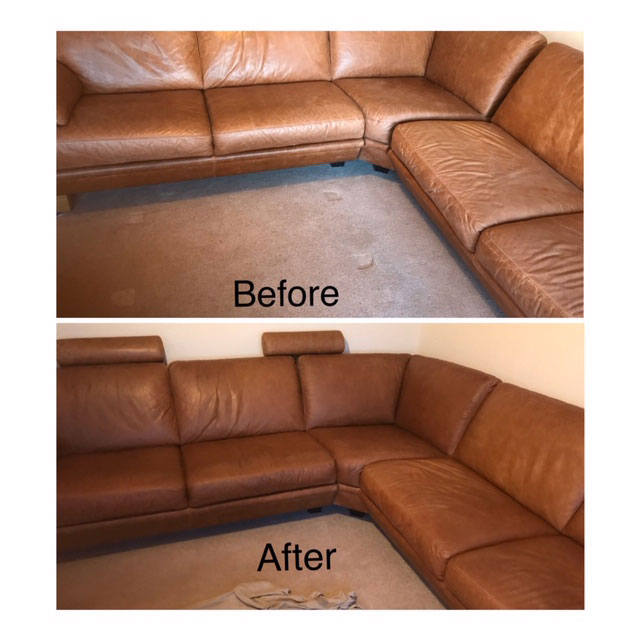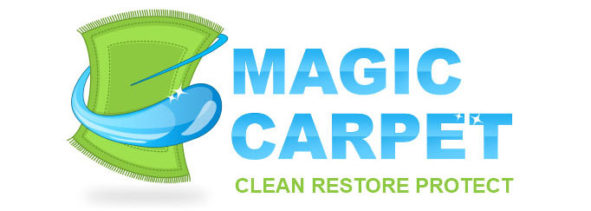leather cleaning & colour repair
Leather is a special material and indeed, it requires special skills and techniques to get it looking shiny and new again. Magic Carpet are specialists at cleaning all types of leather. You can count on us to give your leather sofa the executive treatment it deserves.
Because of the different types of leather on the market, and the fact that damage can be hidden by dirt on leather, we always need to inspect the items before we can give a quote for any work, so please call to arrange a free survey.
Many people buy leather upholstery thinking it is maintenance free. Unfortunately, this just isn’t true. Without proper care and maintenance, leather will deteriorate, becoming dry and brittle. This is when normal use will cause cracking, the finish will wear or flake off, leaving the unprotected leather to absorb dirt and body oils, which become difficult to remove. Central heating in your home can make this all happen quicker than you might think.
But don’t despair! Properly cared for, leather will outlast any fabric, and even if your upholstery has been sadly neglected, the chances are we can restore it to its former glory.
There are several different types of leather used for upholstery, and each of them has different properties and needs to be looked after in slightly different ways.
The majority of leather upholstery uses Pigmented ( or Painted) Leather. If the colour of your leather is completely uniform, with no shading or variation in colour, then it is probably pigmented. Most spills and accidents will simply wipe off with a damp cloth, as the pigment protects the leather by preventing liquids and oils from soaking in to the leather. Antique (“Rub Off”) leather is also pigmented, using a light coloured base coat, with a darker, sometimes black, top coat to give an antique effect. There are also many variations of colour and grain which are used to make leathers of all different colours, textures and patterns.
Pull-Up, Semi Aniline, and Aniline leathers are also used for upholstery. These are more ‘natural’ products than pigmented leathers, often showing imperfections like scars, creases, and variations in shade. They tend to scratch quite easily, absorb liquids quickly, and stain easily. If you look at these types of leather with a microscope, you will see lots of tiny holes, or pits, in the surface of the leather. These are where the hairs grew out of the animals hide, and they are not visible on pigmented leathers. These types of leather are often more difficult to clean than pigmented leather, and require more maintenance, as they do not have a layer of pigment protecting the leather from wear, spills, sunlight and all the other things which can damage the leather.
There are several other types of leather on the market, Suede and Nubuck being the ones most of you will have heard of, These can be cleaned but require more intensive work.



Caring For Your Leather
So, how should you look after your leather?
The most important thing to do is to correctly identify the type of leather you own, and use products specifically for that type of leather. If there is a care label on your upholstery, they often contain advice about several types of leather used by the manufacturer, so you still might not know what type of leather you have. Don’t bother asking the retailer either – they aren’t leather experts, they just sell furniture, so you can almost guarantee the advice they give you will be aimed at getting you to spend money on the cleaning products they stock – whether it is the right product for your leather or not! If you aren’t sure, get professional advice.
A few basic rules for all leathers are;
1) Deal with spills straight away. Don’t leave spills of any sort sitting on the leather – the longer it is there, the more likely it is to cause a permanent mark. Scrape off any solid matter with a blunt knife or scraper, and blot up any liquid with kitchen paper or a clean preferably soft cotton white towel.
2) Protect your leather from new. Professionally applied Protection will help keep leather, prevent wear, and make the removal of dirt and spills much easier.
3) Don’t wait until the leather is too dirty before you clean it, or damage may be revealed. Regular maintenance is better than occasional aggressive cleaning.
4) Don’t use baby wipes, furniture polish, washing up liquid, or any other household cleaning products on leather. They will ALL cause damage which you may not notice until it is too late for us to repair or restore it.
